F9F Cougar on:
[Wikipedia]
[Google]
[Amazon]
The Grumman F9F/F-9 Cougar is a
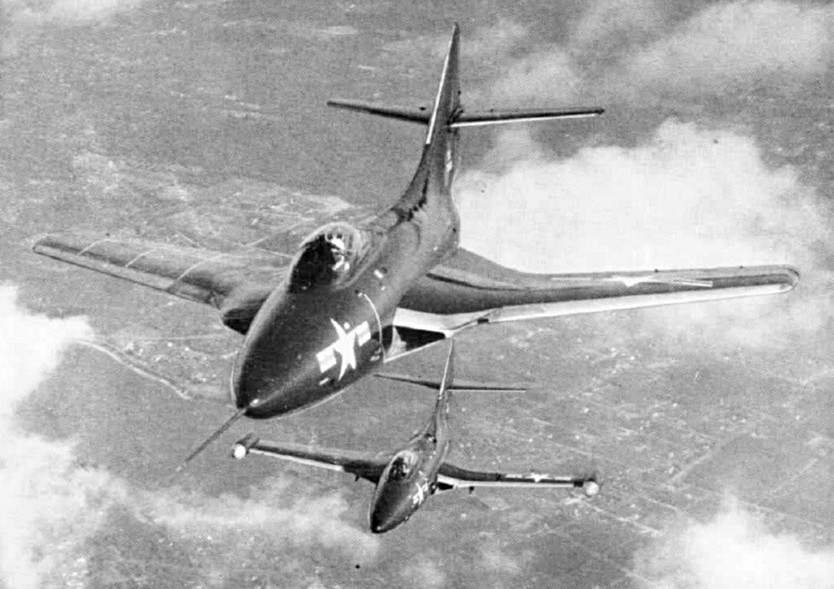 Rumors that the Soviet Union had produced a swept-wing fighter had circulated a year before the
Rumors that the Soviet Union had produced a swept-wing fighter had circulated a year before the
 Initial production (646 airframes) was the F9F-6, delivered from mid-1952 through July 1954. The F9F-6 first flew on September 20, 1951, seven months after Grumman signed a contract with the Navy for swept-wing fighter.Kinzey 1983, p. 8. The first 30 production aircraft used the same J42 P-6 engine used in the F9F-5, but was then replaced by the more powerful J42 P-8 with of thrust.Elward 2010, p. 115. The J42 was a licensed version of the Rolls-Royce Nene.
Armament was four 20 mm (.79 in) AN/M3 cannons in the nose and provisions for two bombs or drop tanks under the wings. Most were fitted with a UHF homing antenna under the nose, and some were fitted with probes for inflight refuelling. The F9F-6 used an Aero 5D-1 weapons sight with an APG-30A gun-ranging radar. The F9F-6 was later designated F-9F in 1962. Sixty were built as F9F-6P reconnaissance aircraft with cameras instead of the nose cannon.Elward 2010, p. 128.
After withdrawal from active service, many F9F-6s were used as unmanned drones for combat training, designated F9F-6D, or as drone controllers, designated F9F-6K.Kinzey 1983, p. 8. The F9F-6K and the F9F-6D were redesignated the QF-9F and DF-9F, respectively.
Initial production (646 airframes) was the F9F-6, delivered from mid-1952 through July 1954. The F9F-6 first flew on September 20, 1951, seven months after Grumman signed a contract with the Navy for swept-wing fighter.Kinzey 1983, p. 8. The first 30 production aircraft used the same J42 P-6 engine used in the F9F-5, but was then replaced by the more powerful J42 P-8 with of thrust.Elward 2010, p. 115. The J42 was a licensed version of the Rolls-Royce Nene.
Armament was four 20 mm (.79 in) AN/M3 cannons in the nose and provisions for two bombs or drop tanks under the wings. Most were fitted with a UHF homing antenna under the nose, and some were fitted with probes for inflight refuelling. The F9F-6 used an Aero 5D-1 weapons sight with an APG-30A gun-ranging radar. The F9F-6 was later designated F-9F in 1962. Sixty were built as F9F-6P reconnaissance aircraft with cameras instead of the nose cannon.Elward 2010, p. 128.
After withdrawal from active service, many F9F-6s were used as unmanned drones for combat training, designated F9F-6D, or as drone controllers, designated F9F-6K.Kinzey 1983, p. 8. The F9F-6K and the F9F-6D were redesignated the QF-9F and DF-9F, respectively.


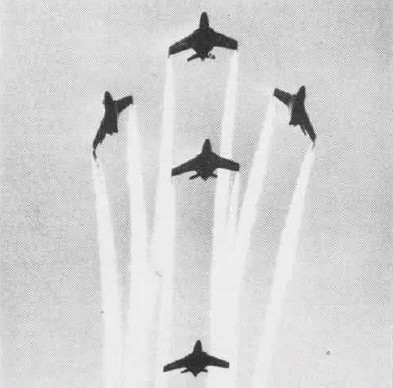
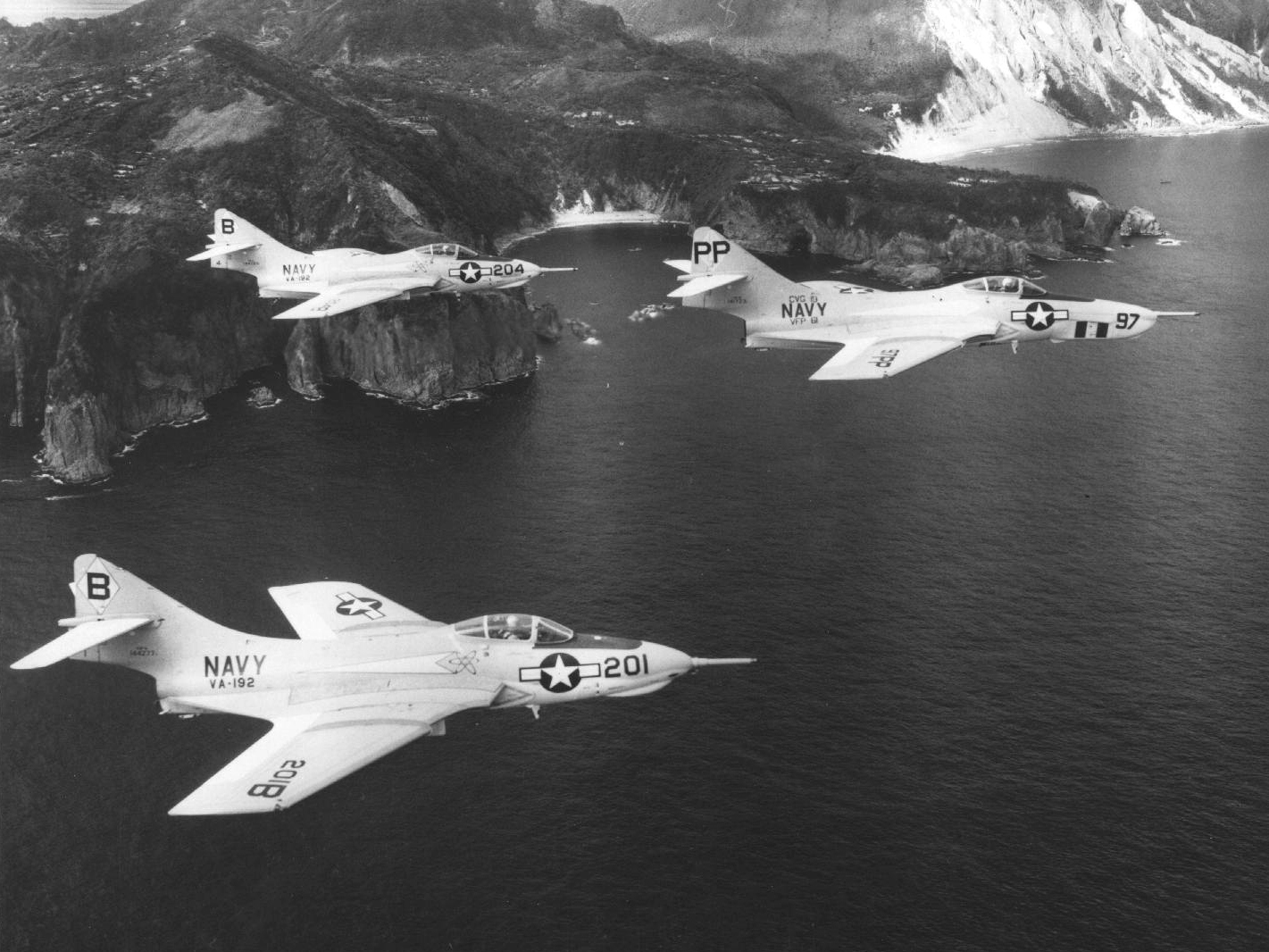
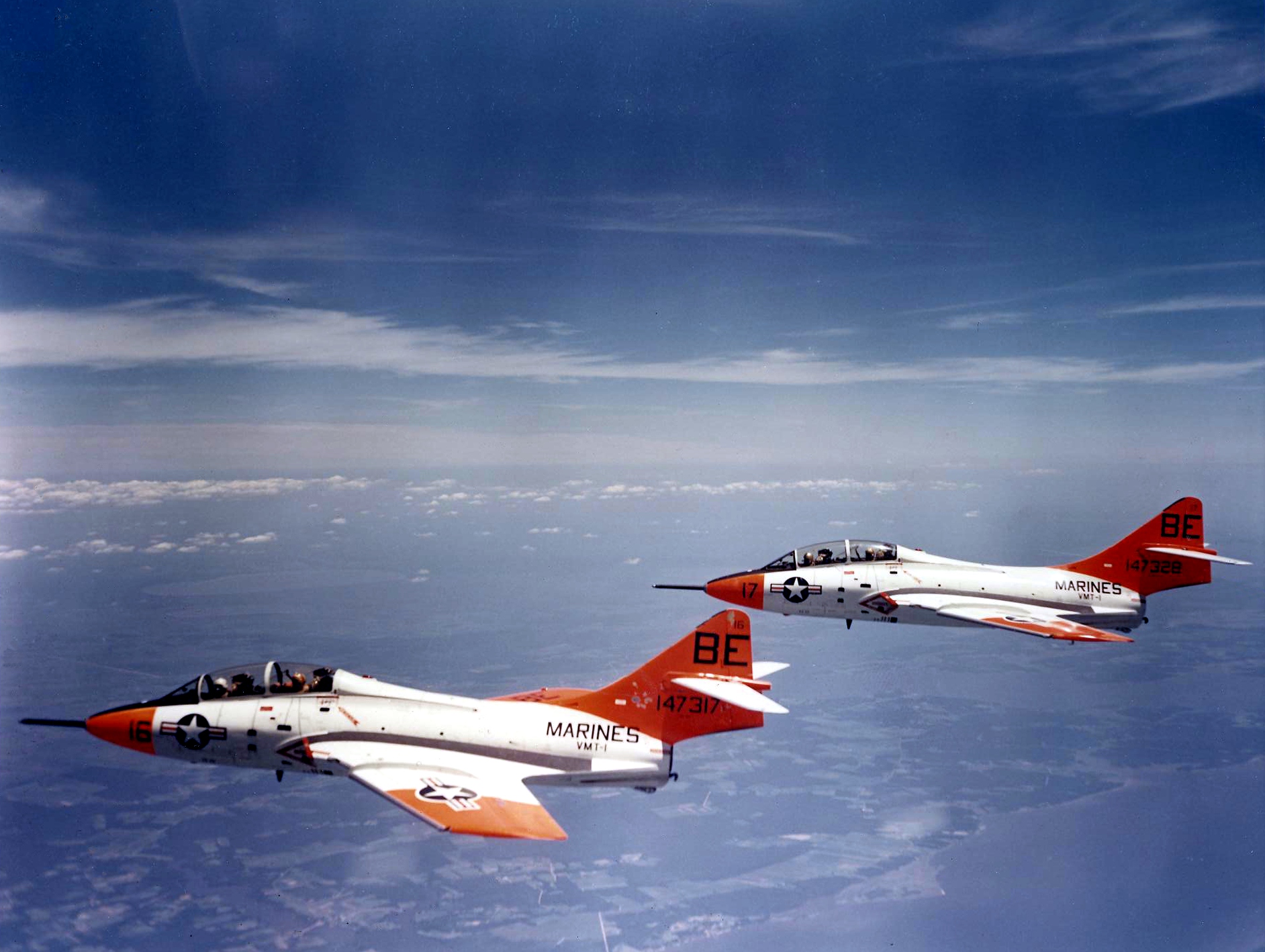
 ;XF9F-6 : Prototypes built from the F9F-5 Panther, featuring swept-wing design, three built.
;F9F-6 : Initial production version; redesignated F-9F in 1962, 646 built.
;F9F-6P : Photo-reconnaissance versions; redesignated RF-9F in 1962, 60 built.
;F9F-6PD : Drone director aircraft, converted from F9F-6Ps; redesignated DF-9F in 1962.
;F9F-6D : Drone director aircraft, converted from F9F-6s; redesignated DF-9F in 1962.
;F9F-6K : Unmanned drone for combat training, converted from F9F-6s; redesignated QF-9F in 1962.
;F9F-6K2 : An improved version of the F9F-6K target drone; redesignated QF-9G in 1962.
;F9F-7 : Built with the Allison J33 engine; most were converted to take J48s; redesignated F-9H in 1962, 168 built.
;F9F-8 : Longer center fuselage, strengthened canopy, redesigned wing, increased fuel capacity, and the ability to carry AIM-9 Sidewinder missiles; redesignated F-9J in 1962, 601 built.
;YF9F-8B : Prototype for a single-seat attack-fighter aircraft converted from a F9F-8; later redesignated YAF-9J.
;F9F-8B : F9F-8s converted into single-seat attack-fighters; later redesignated AF-9J.
;F9F-8P : Photo-reconnaissance versions built from F9F-8s; later redesignated RF-9J, 110 built.
;YF9F-8T : One F9F-8 aircraft converted into a prototype for the F9F-8T training aircraft; later redesignated YTF-9J.
;F9F-8T : Two-seat trainers built from F9F-8s; redesignated TF-9J in 1962, 399 built.
;NTF-9J : Two TF-9Js used for special test duties.
;YF9F-9: Original designation of the YF11F-1 Tiger prototypes. First flight was on 30 July 1954; redesignated in April 1955.
;XF9F-6 : Prototypes built from the F9F-5 Panther, featuring swept-wing design, three built.
;F9F-6 : Initial production version; redesignated F-9F in 1962, 646 built.
;F9F-6P : Photo-reconnaissance versions; redesignated RF-9F in 1962, 60 built.
;F9F-6PD : Drone director aircraft, converted from F9F-6Ps; redesignated DF-9F in 1962.
;F9F-6D : Drone director aircraft, converted from F9F-6s; redesignated DF-9F in 1962.
;F9F-6K : Unmanned drone for combat training, converted from F9F-6s; redesignated QF-9F in 1962.
;F9F-6K2 : An improved version of the F9F-6K target drone; redesignated QF-9G in 1962.
;F9F-7 : Built with the Allison J33 engine; most were converted to take J48s; redesignated F-9H in 1962, 168 built.
;F9F-8 : Longer center fuselage, strengthened canopy, redesigned wing, increased fuel capacity, and the ability to carry AIM-9 Sidewinder missiles; redesignated F-9J in 1962, 601 built.
;YF9F-8B : Prototype for a single-seat attack-fighter aircraft converted from a F9F-8; later redesignated YAF-9J.
;F9F-8B : F9F-8s converted into single-seat attack-fighters; later redesignated AF-9J.
;F9F-8P : Photo-reconnaissance versions built from F9F-8s; later redesignated RF-9J, 110 built.
;YF9F-8T : One F9F-8 aircraft converted into a prototype for the F9F-8T training aircraft; later redesignated YTF-9J.
;F9F-8T : Two-seat trainers built from F9F-8s; redesignated TF-9J in 1962, 399 built.
;NTF-9J : Two TF-9Js used for special test duties.
;YF9F-9: Original designation of the YF11F-1 Tiger prototypes. First flight was on 30 July 1954; redesignated in April 1955.
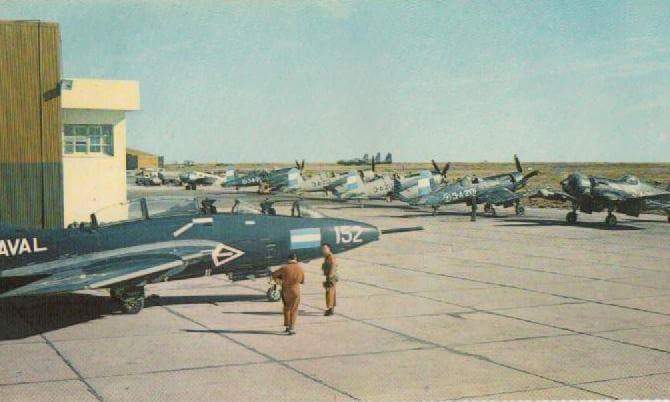 ;
*
;
*
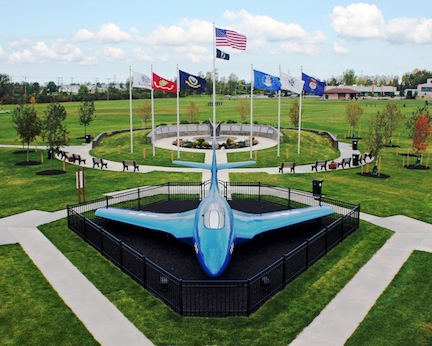




"Honoring those who served, and everyone else."
''Tonawanda News,'' 14 August 2009. The aircraft has been on display since 1959 and in 2009 was refurbished when the new Town of Tonawanda Veterans Memorial was created. *127484 – Former Marine Corps aircraft has been a ground display for children to play on in Boysen Park in Anaheim, California, since about 1960. For safety reasons, in 1967 the aircraft was coated in gunite to cover sharp edges that had developed. ;F9F-7 *130763 –"F9F Cougar/142985."
''Hickory Aviation Museum.'' Retrieved: 30 May 2016.

carrier-based
Carrier-based aircraft, sometimes known as carrier-capable aircraft or carrier-borne aircraft, are naval aircraft designed for operations from aircraft carriers. They must be able to launch in a short distance and be sturdy enough to withstand ...
fighter aircraft
Fighter aircraft are fixed-wing military aircraft designed primarily for air-to-air combat. In military conflict, the role of fighter aircraft is to establish air superiority of the battlespace. Domination of the airspace above a battlefield ...
for the United States Navy and United States Marine Corps. Based on Grumman's earlier F9F Panther, the Cougar replaced the Panther's straight wing with a more modern swept wing
A swept wing is a wing that angles either backward or occasionally forward from its root rather than in a straight sideways direction.
Swept wings have been flown since the pioneer days of aviation. Wing sweep at high speeds was first investigate ...
. Thrust was also increased with the installation of a newer, more powerful engine. The Navy considered the Cougar an updated version of the Panther, despite having a different official name, and thus Cougars started off from F9F-6.
Design and development
Early development
 Rumors that the Soviet Union had produced a swept-wing fighter had circulated a year before the
Rumors that the Soviet Union had produced a swept-wing fighter had circulated a year before the Mikoyan-Gurevich MiG-15
The Mikoyan-Gurevich MiG-15 (russian: Микоя́н и Гуре́вич МиГ-15; USAF/DoD designation: Type 14; NATO reporting name: Fagot) is a jet fighter aircraft developed by Mikoyan-Gurevich for the Soviet Union. The MiG-15 was one of ...
first appeared at air shows in 1949. Despite the level of activity taking place with swept-wing aircraft, the Navy was not initially focused on the development of such aircraft. This was largely because the Navy's focus at the time was defending the battle group against high speed, high altitude bombers with interceptors, as well as escorting medium-range carrier-based bombers in all weather conditions. Air-to-air combat was of less interest. Nonetheless, the Navy appreciated the importance of getting a capable carrier-based swept-wing jet fighter. Grumman was awarded a contract for the development of a swept-wing fighter jet in 1951. The arrival of the MiG-15, which easily outclassed straight-wing fighters in the air war over North Korea, was a major factor.Kinzey 1983, p. 4.Elward 2010, p. 112.Elward 2010, p. 113.
Prototypes were quickly produced by modifying Panthers, and the first (XF9F-6) flew on 20 September 1951. The aircraft was still subsonic, but the critical Mach number was increased from 0.79 to 0.86 at sea level and to 0.895 at 35,000 ft (10,000 m), improving performance markedly over the Panther. Instead of using conventional ailerons for roll control, the F9F-6 uses spoilers on the upper surfaces of the wing. Wing fences were soon added and the spoilers extended from the fences to the tips of the wing. The rudder pedals controlled the part of the rudder below the horizontal tail surface, while the upper portion of the rudder was controlled by a yaw damper. This allowed the Cougar to fly safely and easily without the upper portion of the tail.Kinzey 1983, p. 5.
F9F-6
F9F-7
The F9F-7 referred to the next batch of Cougars that were given the Allison J33 also found in the F9F-4, instead of the Pratt & Whitney J48. A total of 168 were built, but the J33 proved both less powerful and less reliable than the J48. Almost all were retrofitted with the J48 engine, and were thus indistinguishable from F9F-6s. These were redesignated F-9H in 1962.Elward 2010, p. 118.Flexible deck testing
The Navy used two modified F9F-7s to conduct experiments landing on British-inspired flexible decks which did not require the use of landing gear. The reasoning was that since an airplane's landing gear comprises some 33% of the total weight, a plane without landing gear would gain a greater range and would be able to carry more ordnance.Elward 2010, p. 118. The aircraft were fitted with a false bottom under the center fuselage to help balance the plane during landings on the flex-deck made up of a lubricated rubberized fabric. The deck, built by Goodyear was thick and featured several arresting cables.Elward 2010, p. 120. The planes were launched using a ramp and a handling dolly which served as temporary landing gear.Elward 2010, p. 119. The two F9F-7 aircraft in the test were equipped with the powerful J48-P8 engine instead of the Allison J33 engine originally used with the F9F-7. While the landing tests yielded positive results and proved that landing was clearly possible, the project was terminated in 1955 as it would have been difficult to move the aircraft around the carrier deck once they landed. It also required a highly skilled pilot to perform the landings and would have made it impossible to divert to a land base if necessary.Elward 2010, p. 120.Elward 2010, p. 122.F9F-8
Work on the F9F-8 began in April, 1953 with three goals: lower the airplane's stall speed, improve aircraft control at high angles of attack, and increase range. It featured an 8 in (20 cm) stretch in the fuselage and modified wings with a greater chord, an increased area (from ), and a dogtooth. The airframe changes improved low-speed and high angle of attack flying, and gave more room for fuel tanks. The top speed was and minimum catapult speed was lowered to . It also was now capable of breaking the sound barrier in a steep dive. All four ammunition boxes were mounted above the guns, in contrast to the split location of most previous F9Fs including the Panther. Visibility, which was already very good was improved with the F9F-8.Elward 2010, p. 128.Elward 2010, p. 114.Elward 2010, p. 129.Winchester 2005, p. 4-5. 601 aircraft were delivered between April 1954 and March 1957. Late production F9F-8 aircraft were given the ability to carry four AIM-9 Sidewinderair-to-air missile
The newest and the oldest member of Rafael's Python family of AAM for comparisons, Python-5 (displayed lower-front) and Shafrir-1 (upper-back)
An air-to-air missile (AAM) is a missile fired from an aircraft for the purpose of destroying a ...
s under the wings (the first Navy aircraft to deploy with the missiles). Most earlier aircraft were later modified to carry Sidewinders. A number were given also nuclear bombing equipment.Elward 2010, p. 128.Elward 2010, p. 72. The F9F-9 was redesignated F-9J in 1962. The F9F-8B aircraft were F9F-8s converted into single-seat attack fighters, later redesignated AF-9J. The Navy acquired 377 two-seat F9F-8T trainers between 1956 and 1960. They were used for advanced training, weapons training, and carrier training, and served until 1974. They were armed with twin 20 mm (.79 in) cannon and could carry a full bombs or missiles load. In the 1962 redesignation, these were later called TF-9J.

Aerial reconnaissance
A total of 110 F9F-8Ps ( photo-reconnaissance) were produced with an extensively modified nose carrying cameras. They were withdrawn after 1960 to reserve squadrons. In 1962, remaining F9F-6P and F9F-8P aircraft were re-designated RF-9F and RF-9J respectively. Modifications of F9F-8 to convert to F9F-8P: *The modification to eliminate the guns and related equipment and incorporate the photographic equipment and automatic pilot and their controls and instruments has resulted in the following changes: *Rearrangement of electronics equipment installed in the area enclosed by the fuselage nose section, lengthening of this section by , and shortening of the sliding nose section. *Rearrangement of the left and right consoles and the main instrument panel to provide space for the controls associated with the additional equipment. *Some minor changes of the fuselage structure and equipment installations to provide for the necessary ducting control for hot air from the engine compressor, which is used for defrosting the camera windows and heating the camera compartment. *Removal of all armament, the Armament Control System, and the AN/APG-30 radar system, and installation of an additional armor plate bulkhead.Flight characteristics and deployment
The F9F was known to be highly maneuverable and easy to fly. Corky Meyer, who flew both the F9F Cougar andNorth American FJ-3 Fury
The North American FJ-2 and FJ-3 Fury are a series of swept-wing carrier-capable fighters for the United States Navy and Marine Corps. The FJ-2 resulted from an effort to navalize the North American F-86 Sabre operated by the United States Ai ...
, noted that compared to the latter the Cougar had a higher dive speed limit (Mach 1.2 vs Mach 1), a higher maneuvering limit of 7.5-g (compared to 6-g), and greater endurance.
" heCombat Air patrol mission was for two hours on station at from the carrier. This required 2+30 takeoff, cruise, and landing endurance plus reserves. The F9F-6 could perform a three-hour CAP mission on internal fuel. The FJ-2 and -3 with external tanks had less that 1+30 mission time and the FJ-4 just met the mission requirement."Elward 2010, p. 138.
The F9F Cougar was also a capable multi-role aircraft, which may explain why it was deployed less often than dedicated fighters.Elward 2010, p. 138. In spite of engine problems that plagued the FJ-3, it was deployed for a longer period than the F9F Cougar. This was more likely attributable to the fact the F9F had an attack role that was being superseded by new jets such as A4D-1 Skyhawk, rather than any deficiency as a fighter.
"The reason the FJ-3 was deployed a little longer and a little more often (19 times vs 16) in fighter squadrons than the F9F-8 probably wasn't because it was the better fighter. More likely it was because it has a minimal capability as an attack aircraft, whereas the F9F-8 was good for that too, including nuclear weapon delivery. In effect the F9F-8 was a jet attack placeholder along with the F7U-3M, while the pipeline was being filled with the FJ-4Bs and A4Ds. As a result, the FJ-3 was the designated day fighter by default on most deployments."Elward 2010, p. 138.
Operational history


United States
The first F9F-6s were assigned to fleet squadronVF-32
Strike Fighter Squadron 32 (VFA-32), nicknamed the "Fighting Swordsmen" are a United States Navy strike fighter squadron presently flying the F/A-18F Super Hornet and based ashore at Naval Air Station Oceana. Their radio callsign is ''Gypsy'' an ...
at the end of 1952. The first F9F Cougar squadron to actually deploy was VF-24
Fighter Squadron 24 (VF-24), called the ''Fighting Renegades'' was a fighter squadron of the United States Navy. Originally established as Fighter Squadron 211 in June 1955, it was redesignated VF-24 on 9 March 1959 and disestablished on 31 August ...
, assigned to in August 1953 but arrived too late to the Korean theater to participate in the air war.Elward 2010, p. 114.
F9F-8s were withdrawn from front-line service in 1958–59, replaced by F11F Tigers and F8U Crusaders. The Naval Reserves used them until the mid-1960s, but none of the single-seat versions were used in the Vietnam War.
The only version of the Cougar to see combat was the TF-9J trainer (known as F9F-8T until 1962) during the Vietnam War. Detachments of four Cougars served with US Marines Headquarters and Maintenance Squadron 11 (H&MS-11) at Da Nang
Nang or DanangSee also Danang Dragons ( ; vi, Đà Nẵng, ) is a class-1 municipality and the fifth-largest city in Vietnam by municipal population. It lies on the coast of the East Sea of Vietnam at the mouth of the Hàn River, and is one ...
and H&MS-13 at Chu Lai, where they were used for fast-Forward Air Control
Forward air control is the provision of guidance to close air support (CAS) aircraft intended to ensure that their attack hits the intended target and does not injure friendly troops. This task is carried out by a forward air controller (FAC).
...
and the airborne command role, directing airstrikes against enemy positions in South Vietnam
South Vietnam, officially the Republic of Vietnam ( vi, Việt Nam Cộng hòa), was a state in Southeast Asia that existed from 1955 to 1975, the period when the southern portion of Vietnam was a member of the Western Bloc during part of th ...
between 1966 and 1968.
The TF-9J two-seat trainer had a long service with the U.S. Navy. It served as the Navy's advanced flight trainer for more than two decades. The proposed Cougar modification (reengined with a J52 engine) was rejected, and the Navy selected the TA-4F Skyhawk. The last Cougar was phased out when Training Squadron 4 ( VT-4) re-equipped in February 1974. A F9F-8T, BuNo 14276, is displayed at the National Naval Aviation Museum at NAS Pensacola
Naval Air Station Pensacola or NAS Pensacola (formerly NAS/KNAS until changed circa 1970 to allow Nassau International Airport, now Lynden Pindling International Airport, to have IATA code NAS), "The Cradle of Naval Aviation", is a United State ...
, Florida.
Transcontinental speed record
The US Navy used the F9F Cougar to set the transcontinental crossing record on April 1, 1954. Three pilots from fleet fighter squadronVF-21
Fighter Squadron 21 (VF-21) ''Freelancers'' was an aviation unit of the United States Navy. Originally established in 1944 as VF-81 it was redesignated VF-13A in 1946, redesignated VF-131 in 1948, redesignated VF-64 in 1950 and redesignated VF- ...
completed the flight in under four hours with LCDR F.X. Brady setting the quickest time of 3 hours, 45 minutes and 30 seconds. This was the first time the distance had been covered in under four hours. The three F9F-6 aircraft refueled over Kansas from a North American AJ Savage, using an experimental refueling probe mounted on the nose.Kinzey 1983, p. 8.Elward 2010, p. 116.
Blue Angels
The U.S. Navy's flight demonstration team, the Blue Angels flew four different variants of F9Fs from the F9F-2 Panther to the F9F-8. The Blue Angels replaced their six F9F-5 Panthers with six F9F-6s in 1953. This was short lived however and the Navy subsequently took them for fleet use without using the planes in an air show. The F9F-6s were then replaced with overhauled F9F-5s until 1954 when the Blue Angels switched to the F9F-8. The Blue Angels used the F9F-8 until 1957 they were replaced by the Grumman F11F-1 Tiger, although one two-seat F9F-8T was retained for press and VIP flights.Elward 2010, p. 142.Argentina
The only foreign air arm to use the F9F Cougar was the Argentine Naval Aviation, who also used the F9F Panther as well. Two F9F-8T trainers were acquired in 1962, and served until 1971. The Cougar was the first jet to break the sound barrier in Argentina. One aircraft (serial 3-A-151) is on display at the Naval Aviation Museum (MUAN) atBahía Blanca
Bahía Blanca (; English: White Bay) is a city in the southwest of the provinces of Argentina, province of Buenos Aires Province, Buenos Aires, Argentina, by the Atlantic Ocean, and is the seat of government of the Bahía Blanca Partido. It had 3 ...
, while the other was sold to a customer in the United States and subsequently lost in an accident on 31 October 1991.
Variants


 ;XF9F-6 : Prototypes built from the F9F-5 Panther, featuring swept-wing design, three built.
;F9F-6 : Initial production version; redesignated F-9F in 1962, 646 built.
;F9F-6P : Photo-reconnaissance versions; redesignated RF-9F in 1962, 60 built.
;F9F-6PD : Drone director aircraft, converted from F9F-6Ps; redesignated DF-9F in 1962.
;F9F-6D : Drone director aircraft, converted from F9F-6s; redesignated DF-9F in 1962.
;F9F-6K : Unmanned drone for combat training, converted from F9F-6s; redesignated QF-9F in 1962.
;F9F-6K2 : An improved version of the F9F-6K target drone; redesignated QF-9G in 1962.
;F9F-7 : Built with the Allison J33 engine; most were converted to take J48s; redesignated F-9H in 1962, 168 built.
;F9F-8 : Longer center fuselage, strengthened canopy, redesigned wing, increased fuel capacity, and the ability to carry AIM-9 Sidewinder missiles; redesignated F-9J in 1962, 601 built.
;YF9F-8B : Prototype for a single-seat attack-fighter aircraft converted from a F9F-8; later redesignated YAF-9J.
;F9F-8B : F9F-8s converted into single-seat attack-fighters; later redesignated AF-9J.
;F9F-8P : Photo-reconnaissance versions built from F9F-8s; later redesignated RF-9J, 110 built.
;YF9F-8T : One F9F-8 aircraft converted into a prototype for the F9F-8T training aircraft; later redesignated YTF-9J.
;F9F-8T : Two-seat trainers built from F9F-8s; redesignated TF-9J in 1962, 399 built.
;NTF-9J : Two TF-9Js used for special test duties.
;YF9F-9: Original designation of the YF11F-1 Tiger prototypes. First flight was on 30 July 1954; redesignated in April 1955.
;XF9F-6 : Prototypes built from the F9F-5 Panther, featuring swept-wing design, three built.
;F9F-6 : Initial production version; redesignated F-9F in 1962, 646 built.
;F9F-6P : Photo-reconnaissance versions; redesignated RF-9F in 1962, 60 built.
;F9F-6PD : Drone director aircraft, converted from F9F-6Ps; redesignated DF-9F in 1962.
;F9F-6D : Drone director aircraft, converted from F9F-6s; redesignated DF-9F in 1962.
;F9F-6K : Unmanned drone for combat training, converted from F9F-6s; redesignated QF-9F in 1962.
;F9F-6K2 : An improved version of the F9F-6K target drone; redesignated QF-9G in 1962.
;F9F-7 : Built with the Allison J33 engine; most were converted to take J48s; redesignated F-9H in 1962, 168 built.
;F9F-8 : Longer center fuselage, strengthened canopy, redesigned wing, increased fuel capacity, and the ability to carry AIM-9 Sidewinder missiles; redesignated F-9J in 1962, 601 built.
;YF9F-8B : Prototype for a single-seat attack-fighter aircraft converted from a F9F-8; later redesignated YAF-9J.
;F9F-8B : F9F-8s converted into single-seat attack-fighters; later redesignated AF-9J.
;F9F-8P : Photo-reconnaissance versions built from F9F-8s; later redesignated RF-9J, 110 built.
;YF9F-8T : One F9F-8 aircraft converted into a prototype for the F9F-8T training aircraft; later redesignated YTF-9J.
;F9F-8T : Two-seat trainers built from F9F-8s; redesignated TF-9J in 1962, 399 built.
;NTF-9J : Two TF-9Js used for special test duties.
;YF9F-9: Original designation of the YF11F-1 Tiger prototypes. First flight was on 30 July 1954; redesignated in April 1955.
Operators
 ;
*
;
*Argentine Navy
The Argentine Navy (ARA; es, Armada de la República Argentina). This forms the basis for the navy's ship prefix "ARA". is the navy of Argentina. It is one of the three branches of the Armed Forces of the Argentine Republic, together with the ...
– Argentine Naval Aviation
;
* United States Navy
* United States Marine Corps
Aircraft on display



Argentina
;F9F-8T *0516/3-A-151 (Argentine Navy) – Argentine Naval Aviation Museum (''Museo de la Aviacion Naval'' - MUAN) atBahía Blanca
Bahía Blanca (; English: White Bay) is a city in the southwest of the provinces of Argentina, province of Buenos Aires Province, Buenos Aires, Argentina, by the Atlantic Ocean, and is the seat of government of the Bahía Blanca Partido. It had 3 ...
, Argentina.
United States
;F9F-6 *126670 – in storage at theNational Air and Space Museum
The National Air and Space Museum of the Smithsonian Institution, also called the Air and Space Museum, is a museum in Washington, D.C., in the United States.
Established in 1946 as the National Air Museum, it opened its main building on the Nat ...
, Paul E. Garber Preservation, Restoration, and Storage Facility, Suitland, Maryland
Suitland is an unincorporated community and census designated place (CDP) in Prince George's County, Maryland, United States, approximately one mile (1.6 km) southeast of Washington, D.C. As of the 2020 census, its population was 25,839. Prio ...
.
*128109 – National Naval Aviation Museum at NAS Pensacola
Naval Air Station Pensacola or NAS Pensacola (formerly NAS/KNAS until changed circa 1970 to allow Nassau International Airport, now Lynden Pindling International Airport, to have IATA code NAS), "The Cradle of Naval Aviation", is a United State ...
, Florida.
*127236 – New Iberia Veterans Memorial Building, New Iberia, Louisiana.
;F9F-6P
*unknown – The Town of Tonawanda Veterans Memorial in the Town of Tonawanda
Tonawanda (formally the Town of Tonawanda) is a town in Erie County, New York, United States. As of the 2020 census, the town had a population of 72,636. The town is at the north border of the county and is the northern inner ring suburb of Buf ...
, New York
New York most commonly refers to:
* New York City, the most populous city in the United States, located in the state of New York
* New York (state), a state in the northeastern United States
New York may also refer to:
Film and television
* '' ...
.Adamczyk, Ed"Honoring those who served, and everyone else."
''Tonawanda News,'' 14 August 2009. The aircraft has been on display since 1959 and in 2009 was refurbished when the new Town of Tonawanda Veterans Memorial was created. *127484 – Former Marine Corps aircraft has been a ground display for children to play on in Boysen Park in Anaheim, California, since about 1960. For safety reasons, in 1967 the aircraft was coated in gunite to cover sharp edges that had developed. ;F9F-7 *130763 –
Cradle of Aviation
The Cradle of Aviation Museum is an aerospace museum located in Garden City, New York on Long Island, established to commemorate Long Island's part in the history of aviation. It is located on land once part of Mitchel Air Force Base which, tog ...
Museum in Garden City, New York
Garden City is a village located on Long Island in Nassau County New York. It is the Greater Garden City area's anchor community. The population was 23,272 at the 2020 census.
The Incorporated Village of Garden City is primarily located within ...
.
;F9F-8
*131063 – Texas Air Museum in Slaton, Texas.
*131230 – National Naval Aviation Museum, NAS Pensacola
Naval Air Station Pensacola or NAS Pensacola (formerly NAS/KNAS until changed circa 1970 to allow Nassau International Airport, now Lynden Pindling International Airport, to have IATA code NAS), "The Cradle of Naval Aviation", is a United State ...
, Florida.
*131232 – Museum of Flight in Seattle, Washington.
*138876 – Pueblo Weisbrod Aircraft Museum
The Pueblo Weisbrod Aircraft Museum is a non-profit aviation museum located in Southern Colorado. It was founded in the mid-1970s by former Pueblo City Manager Fred Weisbrod. The museum is made up of two hangars that were built in 2005 and 2011. ...
in Pueblo, Colorado.
*141117 – Intrepid Sea-Air-Space Museum in New York, New York
New York, often called New York City or NYC, is the most populous city in the United States. With a 2020 population of 8,804,190 distributed over , New York City is also the most densely populated major city in the Uni ...
. It is on loan from the National Museum of Naval Aviation. It was built in Grumman's Bethpage factory in 1955 and retired from active service in 1965. It previously served as a gate guard for Naval Weapons Station Earle, and later was displayed at a playground in Wall Township, NJ. Restored to wear the colors of fighter squadron VF-61, which flew from in 1956.
*141121 – Pima Air & Space Museum, adjacent to Davis-Monthan AFB, in Tucson, Arizona.
*144275 – Evergreen Aviation & Space Museum
The Evergreen Aviation & Space Museum is an aviation museum in McMinnville, Oregon. Its exhibits include the Hughes H-4 Hercules (''Spruce Goose'') and more than fifty military and civilian aircraft, unmanned aerial vehicles (drones), and spac ...
in McMinnville, Oregon. It is on loan from the National Museum of Naval Aviation and is painted to represent the narrator's aircraft for the U.S. Navy Blue Angels precision flight demonstration team.
;F9F-8B
*144276 – Patuxent River Naval Air Museum in Lexington Park, Maryland.
;F9F-8P
*141675 – Yanks Air Museum in Chino, California.
*141702 – USS Midway Museum
The USS ''Midway'' Museum is a historical naval aircraft carrier museum located in downtown San Diego, California at Navy Pier. The museum consists of the aircraft carrier . The ship houses an extensive collection of aircraft, many of which we ...
in San Diego, California.
*141722 – Flying Leatherneck Aviation Museum
The Flying Leatherneck Aviation Museum is a United States Marine Corps aviation museum currently located at Marine Corps Air Station Miramar, San Diego, California. The museum contains exhibits and artifacts relating to the history and legacy of ...
, MCAS Miramar in San Diego, California.
*144388 – Estrella Warbird Museum
The Estrella Warbirds Museum is an aviation museum dedicated to the restoration and preservation of military aircraft, vehicles, and memorabilia. The museum is located at Paso Robles Municipal Airport in central California and is named after Estr ...
in Paso Robles, California.
*144426 – Pima Air & Space Museum, adjacent to Davis-Monthan AFB in Tucson, Arizona.
*144402 – Military Aviation Preservation Society
The MAPS Air Museum is an aviation museum in Green, Ohio, United States. Run by the Military Aviation Preservation Society, it is located off SR241 on the west side of the Akron-Canton Regional Airport.
The museum holds more than 50 aircraft, m ...
, M.A.P.S. in Canton, Ohio
Canton () is a city in and the county seat of Stark County, Ohio. It is located approximately south of Cleveland and south of Akron in Northeast Ohio. The city lies on the edge of Ohio's extensive Amish country, particularly in Holmes and ...
.
;F9F-8T
*142442 – The Town of Woodridge, New York
Woodridge is a village in Sullivan County, New York, United States. The population was 847 at the 2010 census. The village is in the town of Fallsburg at the junction of county routes 53, 54, 58, and 158. The Woodridge ZIP Code is 12789.
Histo ...
.
*147276 – USS Lexington Museum
USS ''Lexington'' (CV/CVA/CVS/CVT/AVT-16), nicknamed "''The Blue Ghost''", is an built during World War II for the United States Navy. Originally intended to be named ''Cabot'', the new aircraft carrier was renamed while under construction to ...
in Corpus Christi, Texas
Corpus Christi (; Ecclesiastical Latin: "'' Body of Christ"'') is a coastal city in the South Texas region of the U.S. state of Texas and the county seat and largest city of Nueces County, it also extends into Aransas, Kleberg, and San Patrici ...
.
*147283 – Air Zoo
The Air Zoo, founded as the Kalamazoo Aviation History Museum, is an aviation museum and indoor amusement park next to the Kalamazoo-Battle Creek International Airport in Portage, Michigan. The Air Zoo holds many historical and rare aircraft, inc ...
in Kalamazoo, Michigan
Kalamazoo ( ) is a city in the southwest region of the U.S. state of Michigan. It is the county seat of Kalamazoo County. At the 2010 census, Kalamazoo had a population of 74,262. Kalamazoo is the major city of the Kalamazoo-Portage Metropolit ...
.
*147385 – at the Patriot's Point
Patriots Point Naval & Maritime Museum is located in Mount Pleasant, South Carolina, at the mouth of the Cooper River on the Charleston Harbor, across from Charleston.
Museum ships and exhibits
Patriots Point is home to two museum ships:
* , a ...
Naval and Maritime Museum in Mount Pleasant, South Carolina.
*147397 – Pima Air & Space Museum, adjacent to Davis-Monthan AFB in Tucson, Arizona.
*142985 – Hickory Aviation Museum, Hickory Regional Airport (KHKY) in Hickory, North Carolina.''Hickory Aviation Museum.'' Retrieved: 30 May 2016.
Specifications (F9F-6/F-9F)

See also
Notes
Citations
Bibliography
* Angelucci, Enzo and Peter Bowers. ''The American Fighter''. Sparkford, UK: Haynes, 1987. . * * Elward, Brad. ''Grumman F9F Panther/Cougar''. North Branch, Minnesota: Specialty Press, 2010. . * Kinzey, Bert. ''F9F Cougar in Detail & Scale''. Fallbrook, California: Aero Publishers, Inc., 1983. . * Mersky, Peter. "Flying Cougars and Other Unusual Aircraft in Vietnam". ''Aviation News magazine'', Vol. 18, No. 7, 17–31 August 1989. pp. 320–322. * Neubeck, Ken. ''F9F Cougar Walk Around''. Carrollton, Texas: Squadron/Signal Publications, 2012. . * Swanborough, Gordon and Peter M. Bowers. ''United States Navy Aircraft since 1911.'' Annapolis, Maryland: Naval Institute Press, 1990. . * Winchester, Jim. ''American Military Aircraft.'' New York, NY: Metro Books. pp. 186–187. .Further reading
* {{DEFAULTSORT:Grumman F09F6 Cougar F-009 Cougar Grumman F-09 Cougar Single-engined jet aircraft Low-wing aircraft Carrier-based aircraft Aircraft first flown in 1951 Cruciform tail aircraft